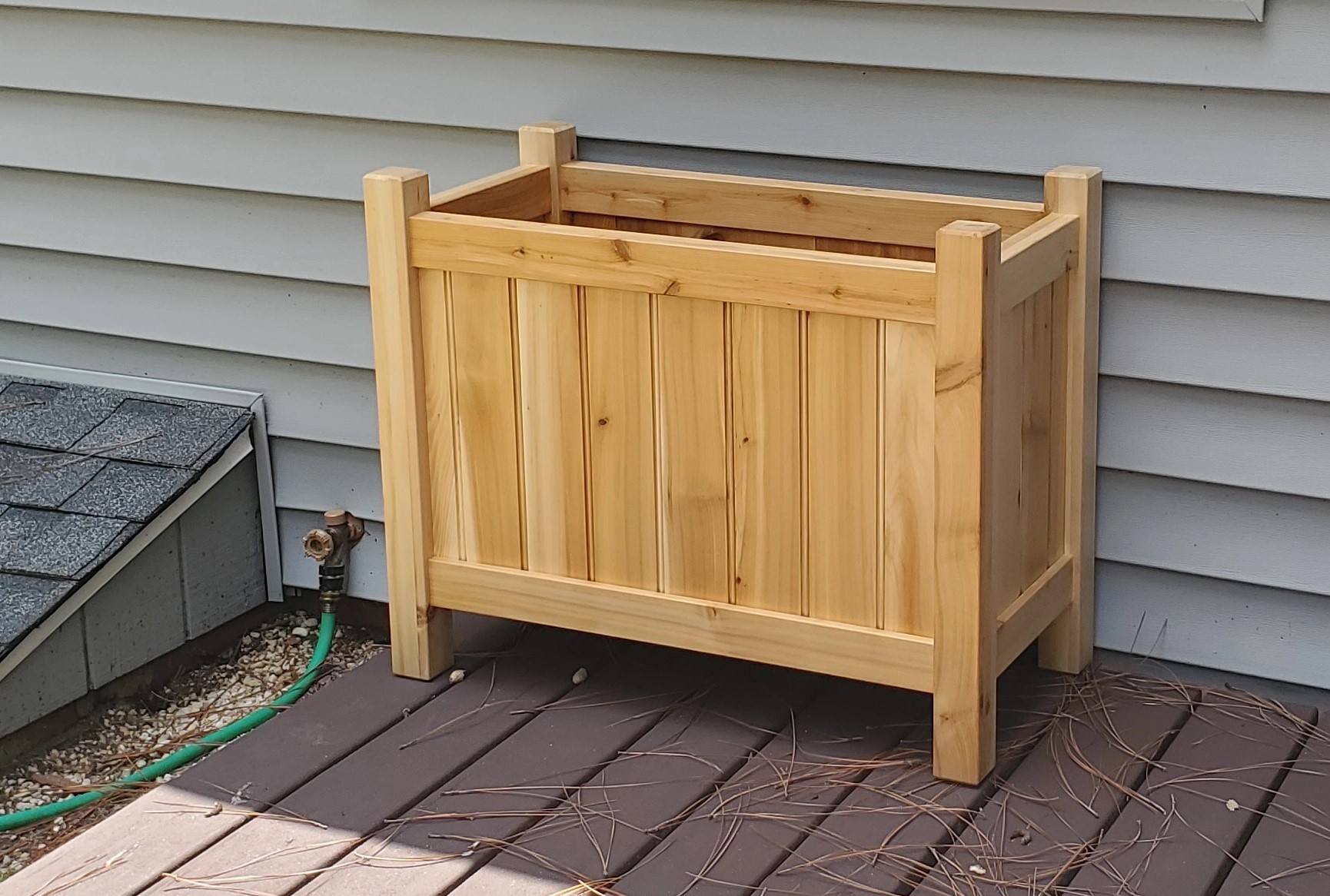Hi everyone,
I’m slowly getting into the craft of woodworking and I’m trying to pick out some “starter” tools. I don’t want to go completely cheap but I don’t want to spend all kinds of money (yet).
I was set on getting a cross cut panel saw for ripping and cross cutting (until I get a ripping saw) and a fine tooth pull saw for more accurate cuts.
My questions for recommendations are:
- Should I get a hardened cross cut saw and just use it until it’s junk or get one I can sharpen?
- Can hardened carbon steel chisels be sharpened or are they also “disposable”?
- Is it better just to get a “dovetail” saw than a fine tooth pull for small, accurate cuts such as a joint?
- On a different note, is a #4 planer the best to start with? A few videos recommend that over a #5 because a #4 is easier for smoothing.
Any help is greatly appreciated. I know I’ll have to just try a few things and see what works best, but I’m trying to be wise with what I get.
- Since you can’t sharpen hardened saws they are basically disposable. If you are just trying out the hobby or aren’t going to be making somewhat heavy use of a saw then it’s probably fine. If you are in it for the long haul then getting a saw you can sharpen will save money over time.
- I don’t think I’ve heard of unsharpenable chisels before. The saws that can’t be sharpened usually call themselves impulse sharpened or something. Are these chisels referred to with the same terminology?
- I think dovetail saws are just especially fine and thin. I don’t think you need one specifically unless you are doing a lot of small, fine dovetails.
- Lots of people advocate for the number 5 plane but l, like Paul Sellers find a number 4 more comfortable for most things. I have a 70s Stanley number 4 and a Veritas 5 1/2. I also had a Stanley number 5. The 5 is quite heavy which can be nice if you want to utilize its mass to really throw it through some thick shavings or rough cutting. But for lighter work and just general smoothing, edging, and chamfering the number 4 is just very pleasant. Not too heavy or ungainly, and easy to maneuver. The 5 has its place but I wouldn’t want to use it for most jobs unless I needed the length for flattening something or the mass to help me muscle through something.
Thank you that’s reassuring. The chisels say “Hardened, tempered chrome carbon-steel” but not impulse, so I think they’ll be fine. The other thing I’m trying to find is a manual hand brace drill but the only new one I could find was from France and about $160. I’m thinking of just finding an okay one on eBay and seeing how it does.
If you have any other suggestions for whetstone liquid or wood glue, it would definitely save me some searches.
I bought diamond stones for sharpening and just used windex or whatever cheap offbrand stuff I could find and it worked well. I’m not sure what one would use with traditional sharpening stones.
For glue just standard yellow wood glue is fine for most purposes (Lepage brand I think?). Titebond is good too though more expensive, and they have different varieties if you need water proof glue or whatever.
I never did get a hand brace. I think Lee Valley Tools might sell one but yeah it was expensive and for most purposes I’m fine with just my electric drill. For those traditional braces I think they also require a matching bit since they don’t have a standard chuck so watch out for that I guess. Brace and bit always seemed cool to me but I could never justify the expense of getting into one, nor did I ever come across a good deal on a used one that had a bit as well.
I haven’t come across using Windex, but I guess it’s worth a try.
I see the Lee Valley one and yeah it’s still kind of expensive. There are quite a few on eBay that are affordable. I’ll have to check out the chuck situation on it though.
Thanks again for you insight.
An antique or vintage brace may have a chuck intended for square-shanked bits, but there are chuck adapters available that should allow you to use hex-shanked bits (to the best of my knowledge, anyway—I’m also just building up my toolkit, so lots of reading but little practical experience). Or track down some of the old bits.
https://www.letoolman.com/antique—vintage-tools.html lists “Vintage Stanley brace & bits $10. each with a free bit” in his horribly messy inventory. Might be worth emailing to ask?
Yeah I see that about the chuck now. And not all of the listings show what chuck it has. The website looks like it has a few good things to pick through but the photo of 11 hand braces with the caption “some are sold” just made me chuckle.
I don’t think he ever rephotographs anything or removes it from the site. A mess, like I said. I suspect he’s a retiree running a part-time business out of his home.
Windex is one of those Paul sellers tips/suggestions :)
Look for used tools at garage sales and flea markets. The only people who should be buying $160 braces are rich retirees. I built a pretty great collection of tools in a year or so of hitting sales pretty regularly, and you end up learning a lot about what different tools are like, and how they work, and for pretty cheap. There’s still tons of quality pieces out there from Disston, Stanley, etc.
Hard tooth saws actually serve a different purpose than traditional soft tooth saws, even though they do work well for traditional tasks.
With the greater adoption of synthetic materials (melamine, plywood, etc) craftsman needed tools with greater edge retention as these new materials were brutal on the edge. Thus the disposable hard tooth saw was born. It was sharp, it stayed sharp and you just toss it when it gets dull.
I work with only normal lumber and mostly soft wood and I prefer traditional saws. With a saw I can sharpen I can sharpen it as much as I want and maintain peak performance at all times. With disposables I find that you tend to keep using them until they are kind of unbearable.
When I get a soft tooth saw I find that it usually needs to be reprofiled but after that it’s a piece of cake to sharpen again.
Also for hard teeth saws you can sort of sharpen them, or at least increase their lifespan a little. You can place the saw flat on a sharpening stone and sharpen the outside of the teeth. You can’t do this for long however as the saw’s set is ground away.
Additionally disposables can be good if you want to use a saw that requires a lot of skill to sharpen (like a Japanese dozuki saw).
If you decide to get a soft tooth saw I recommend buying used and checking out plenty of discount shops. These were pumped out by the millions and there are still out there. Since most saws use the same steel you don’t need to worry about getting a “defective” one since any will work fine. The only thing you may need to do, other than sharpening, is shape the handle. A lot of handles were mass produced on a router and are super thick, chunky and uncomfortable. Carving them down with your knife will improve it dramatically.
Aside from that it’s just personal preference and I don’t look down on anyone that prefers hard tooth saws and it doesn’t make you a “lesser” wood worker (you should still learn to sharpen a saw so you can try a traditional saw)
Also for hand planes a #5 vs #4 are mostly down to preference, some people like slightly longer and heavier like the #5 and vice versa.
Same with saws I recommend a used handplane because tons of them exist and they should be cheap.
Make sure to get a usable hand plane, a good one should have
-
Cast iron frog and body
-
Comfortable tote (rear handle) and knob (front handle)
-
A Mostly flat sole, a lot of cheap planes are really badly warped and take forever to flatten, a mostly flat one will save you a ton of time.
-
No deep rust on the blade. Surface rust is fine but deep pitting on the flat side of the iron will prevent you from sharpening it properly
-
No cracks in the sole and body
-
Tight mouth (not super necessary if the frog is adjustable)
-
No major chips on the blade or god forbid a bevel on the flat side because someone’s too lazy to properly sharpen it.
Some premium features to look for too
-
Handles made from premium or exotic wood (many Stanley’s used rosewood)
-
Thick machined chip breaker and iron
-
many brass or bronze parts, even the body on extremely premium examples
-
Frog set screw, not a super premium feature and medium range planes should have it. The lack of one isn’t a deal breaker though
-
Lateral adjustment levers made with multiple parts (cheap planes will have one stamped)
For restoring and tuning your plane I would highly recommend Rex Krueger’s videos.
-
What are you planning on making?
Are you planning on using dimensioned stock or rough lumber?
I have a few ideas. My first one will probably be making a workbench haha. Then some small stuff like a tea box and a wooden mallet.
I’m not sure what kind of lumber yet. Whatever I can find for cheap and my family friend’s Amish guy.
- Should I get a hardened cross cut saw and just use it until it’s junk or get one I can sharpen?
You can set up a saw with a combination tooth pattern so you can cross cut and rip easier with the same saw. If you try and rip with a crosscut pattern you’ll struggle. Spear and Jackson sells a combination saw. You might need two different files in order sharpen the different profiles.
- Can hardened carbon steel chisels be sharpened or are they also “disposable”?
What do you mean by hardened? Do you mean quenched(hardened) and annealed(tempered) or just quenched? I’m don’t think someone sells a just quenched chisel. I’m pretty sure that would be too brittle.
- Is it better just to get a “dovetail” saw than a fine tooth pull for small, accurate cuts such as a joint?
What do you mean by “fine tooth pull”? Do you mean a pull saw with fine teeth? Like a dozuki?
- On a different note, is a #4 planer the best to start with? A few videos recommend that over a #5 because a #4 is easier for smoothing.
A lot of people recommend the #4 for smoothing along with a scrub plane for rough work. If you need to straighten longer boards you’ll need a jointer plane too.
Because of this some people recommend jack planes. There are also low angle jack planes. Low angle planes can benefit from having two different plane blade angles for different tasks. A lower angle for end grain and a higher angle for smoothing. You would need two different blades for this. Since the jack plane is longer you’re also able to joint with it too. You can also scrub with a jack plane by opening the mouth to remove more material. With a jack plane you’ll need a block plane for chamfers.


